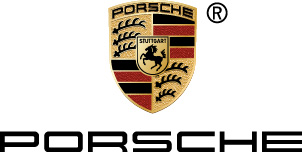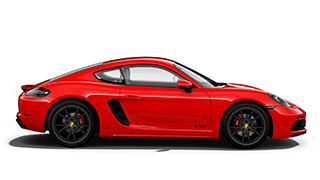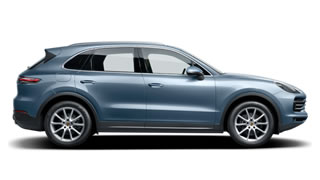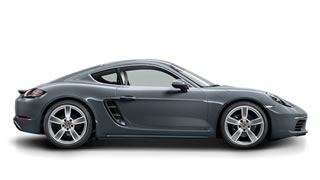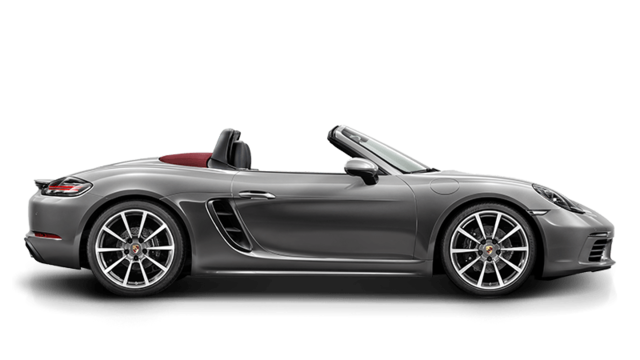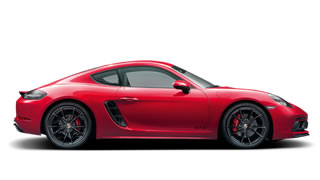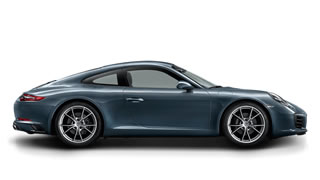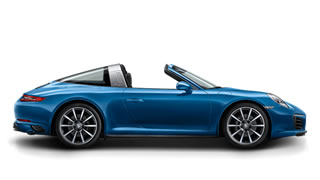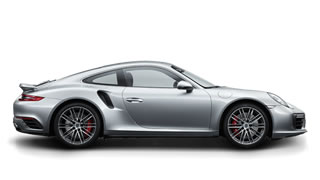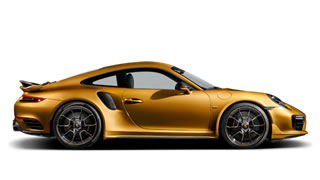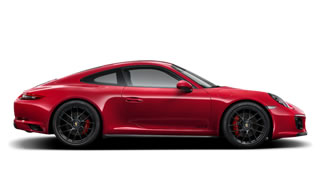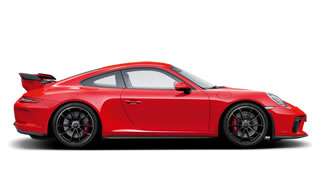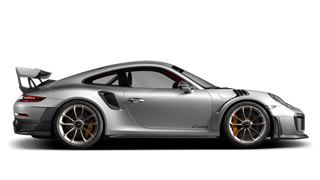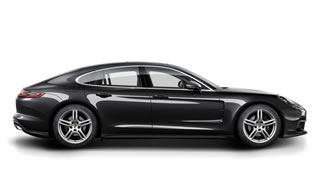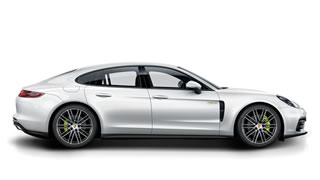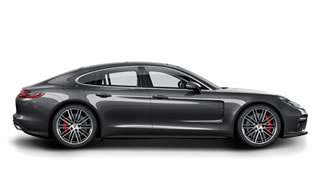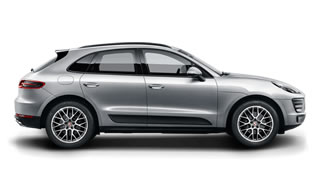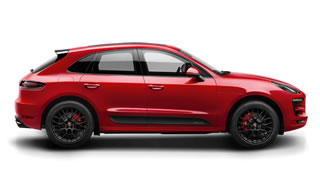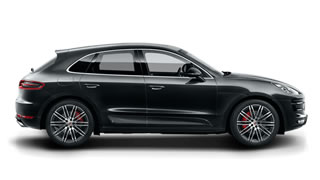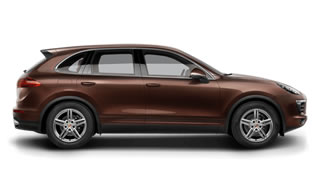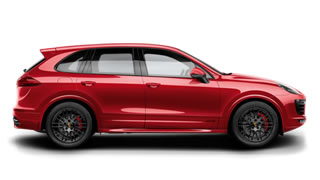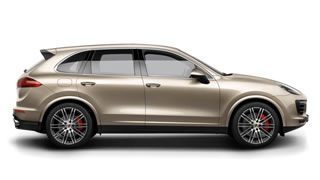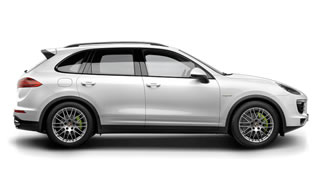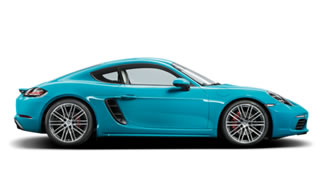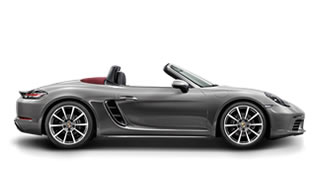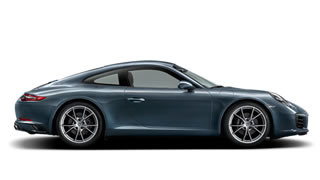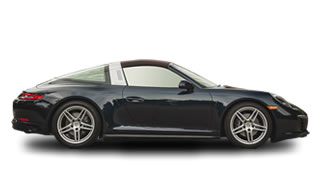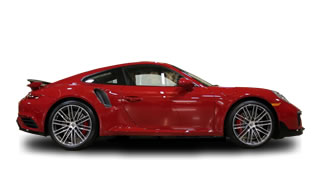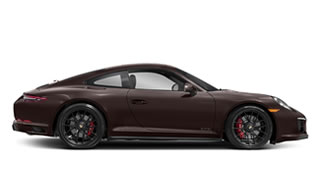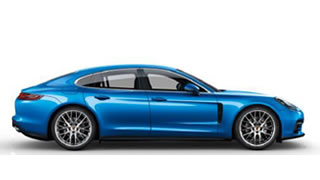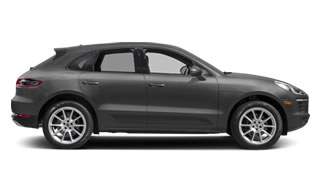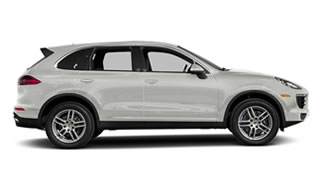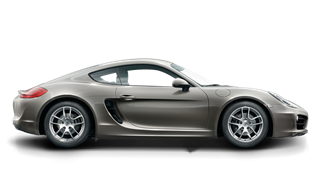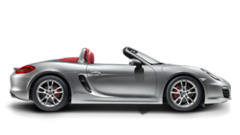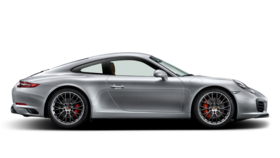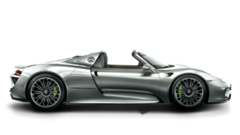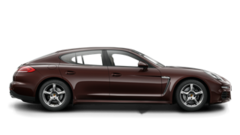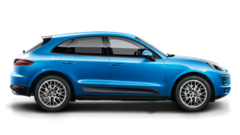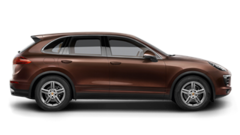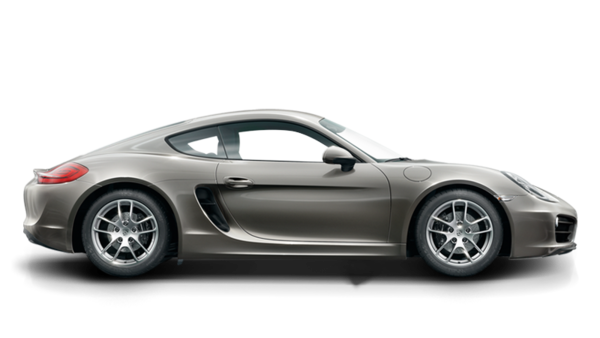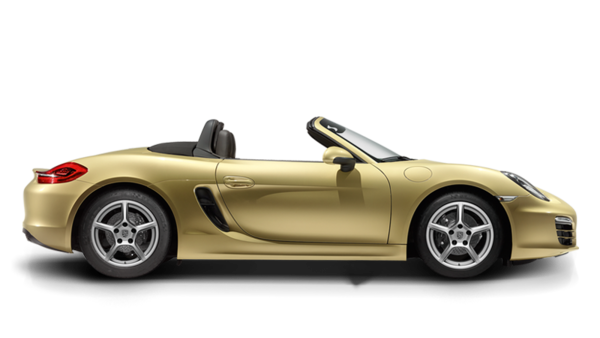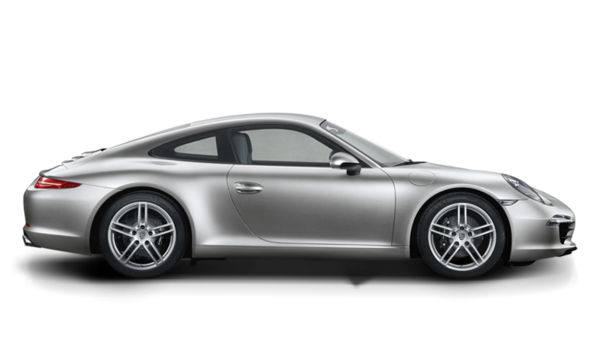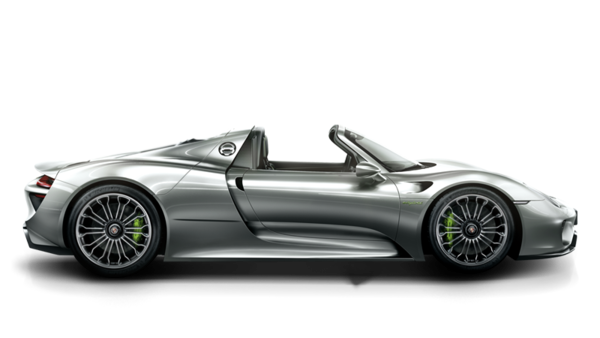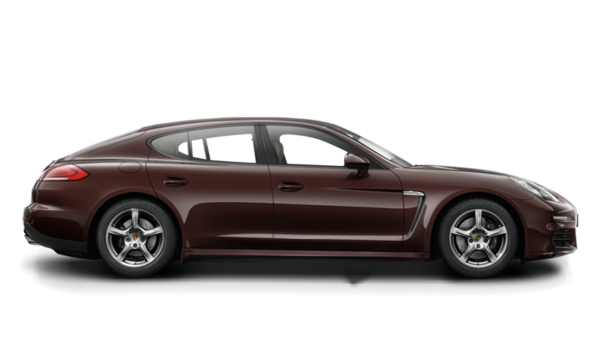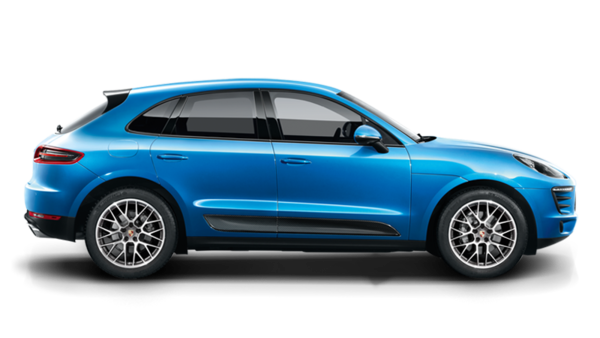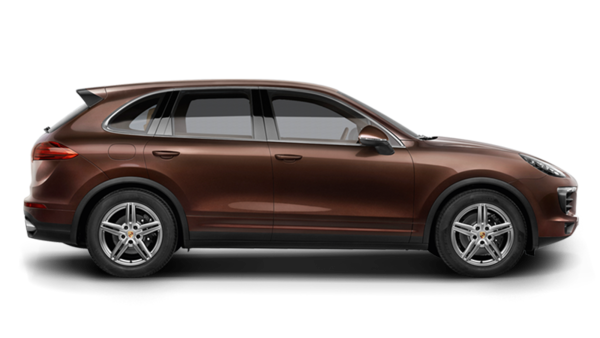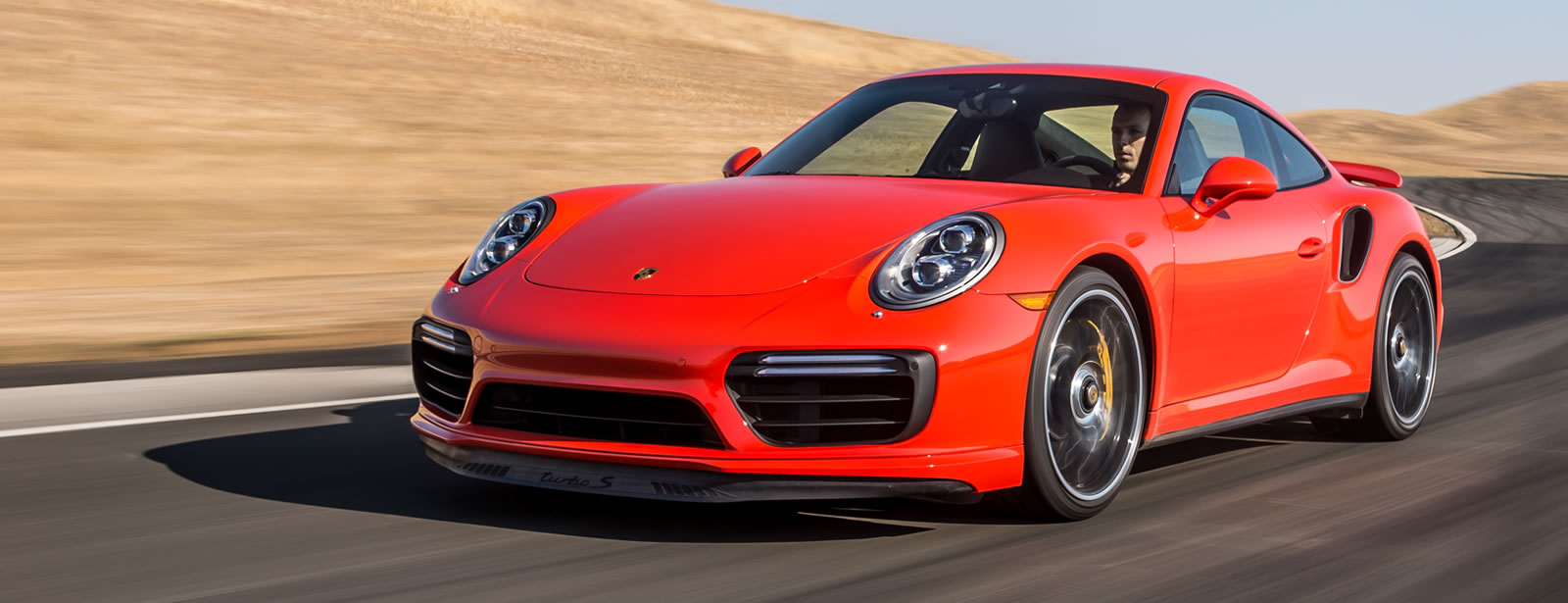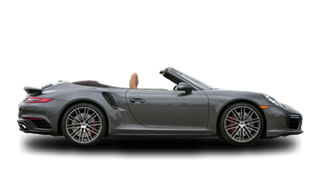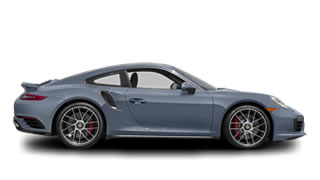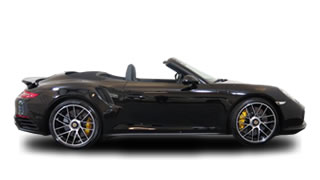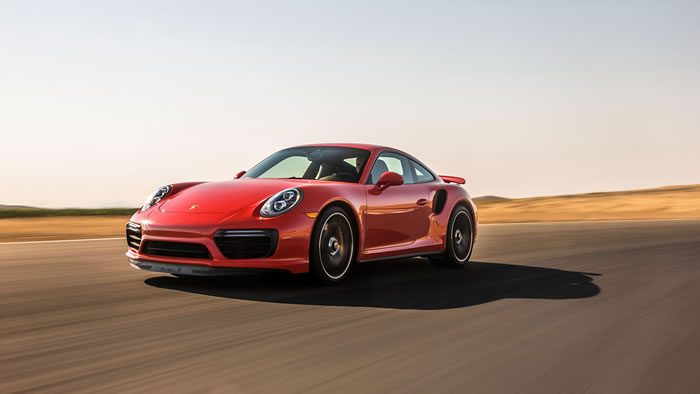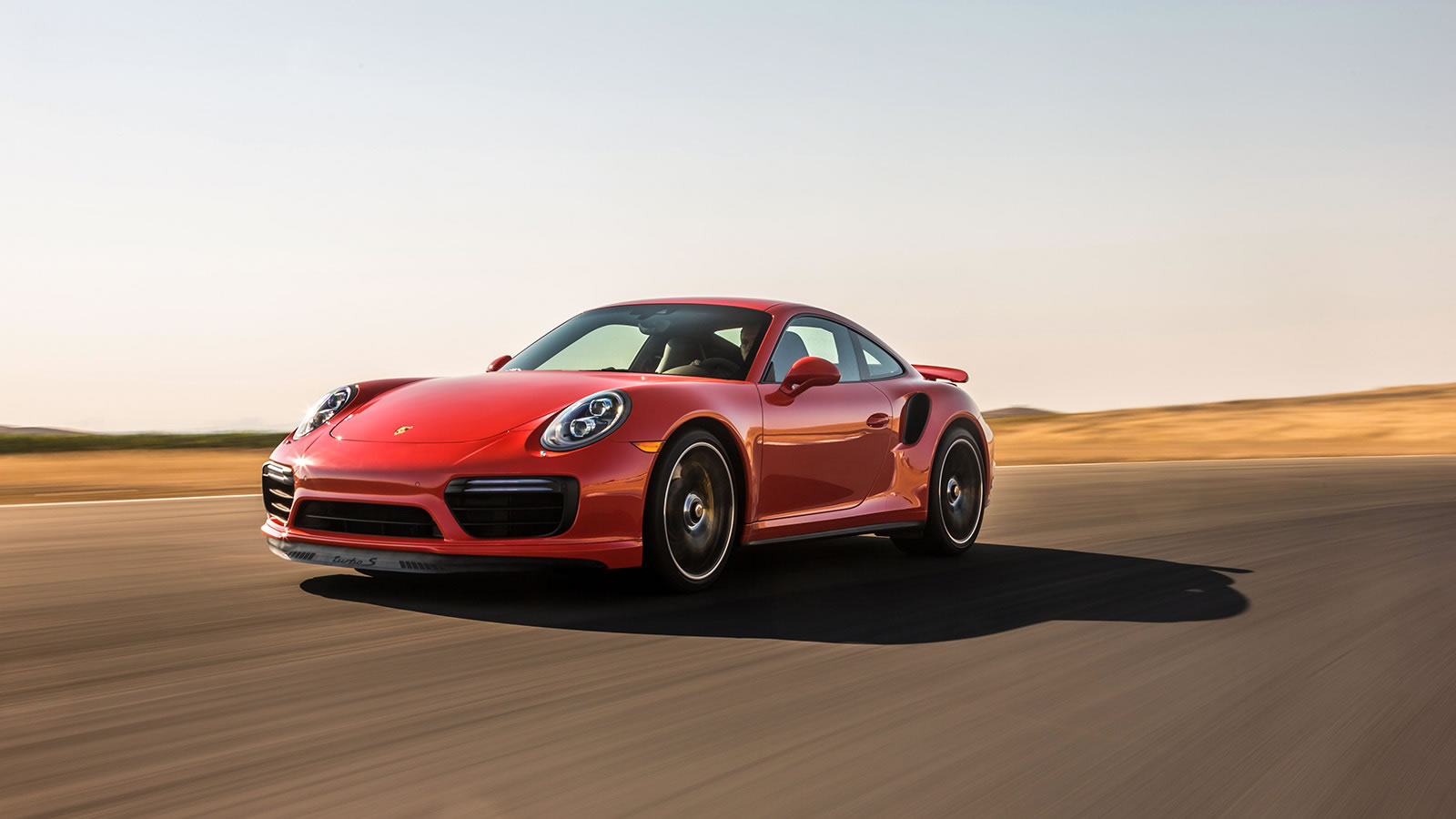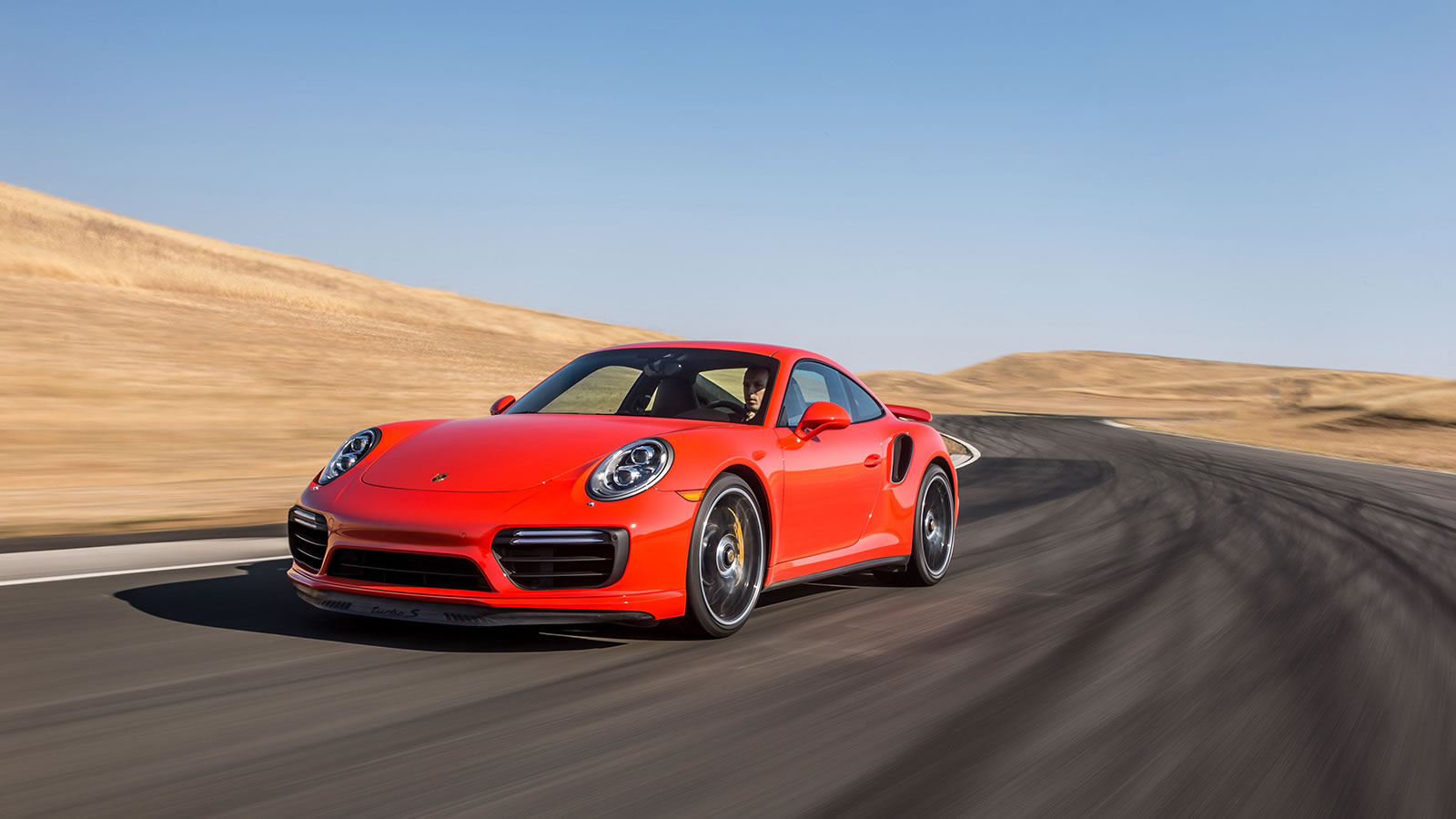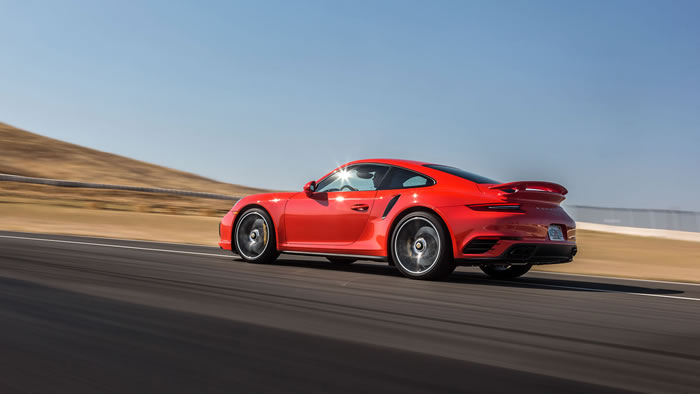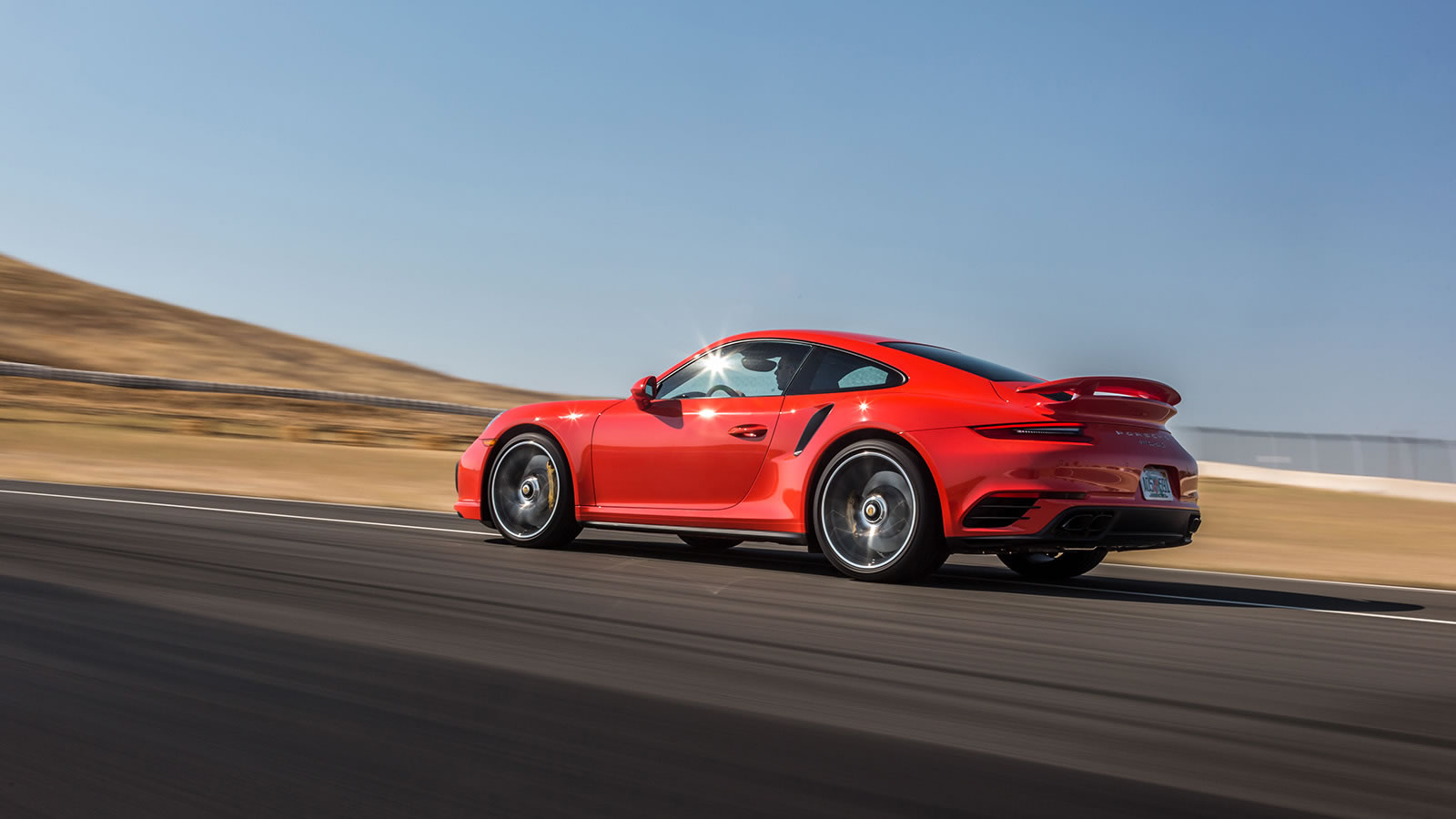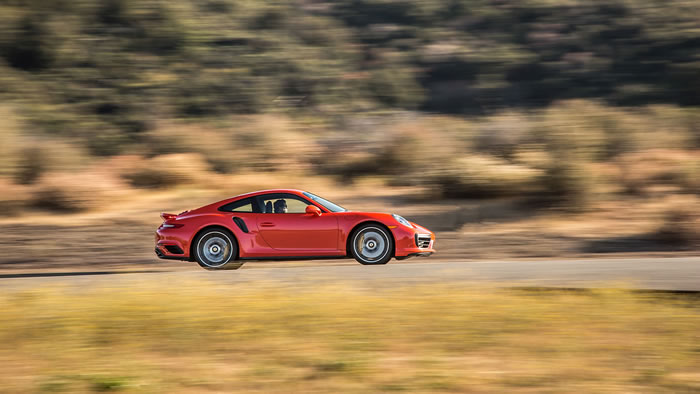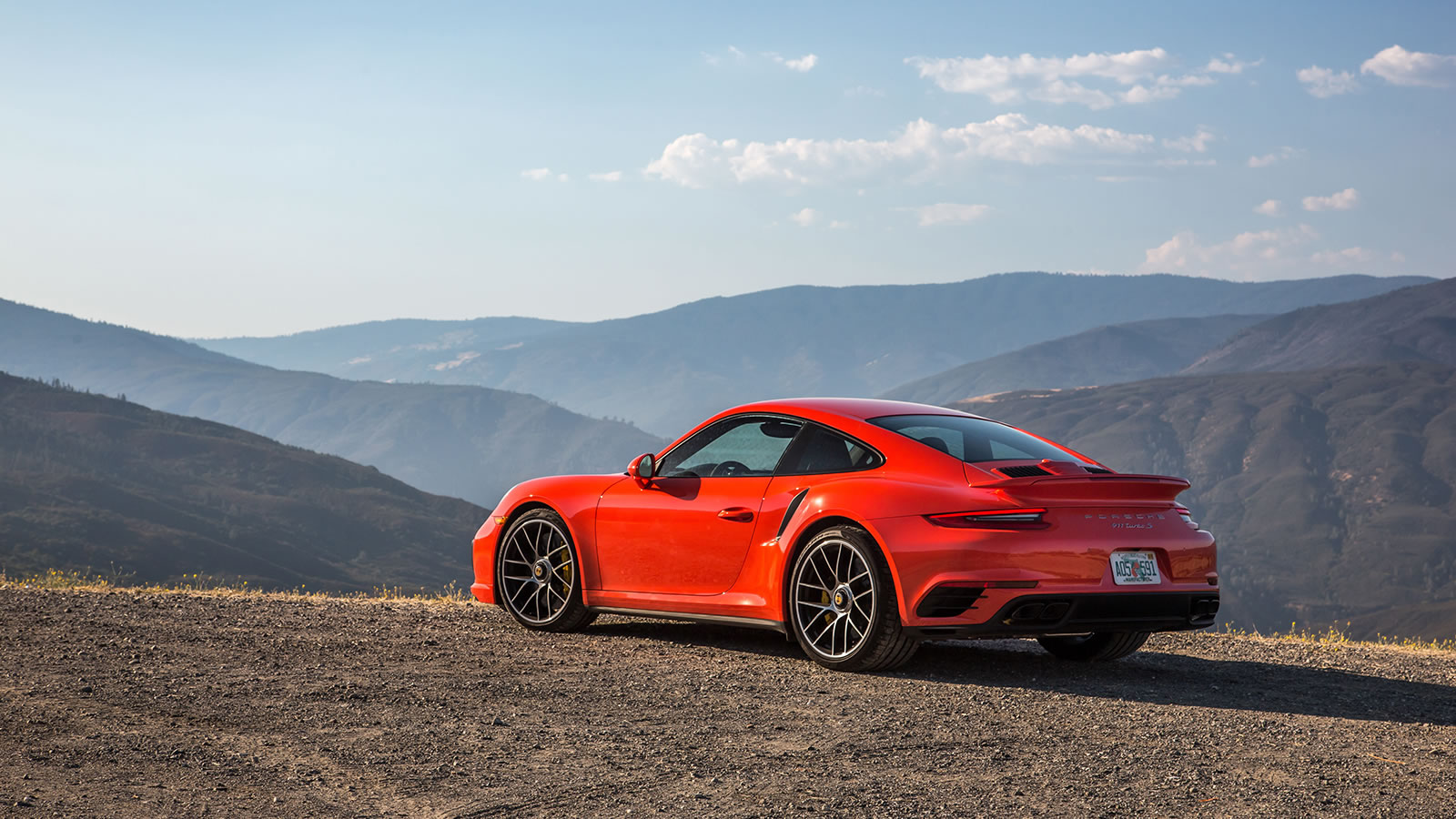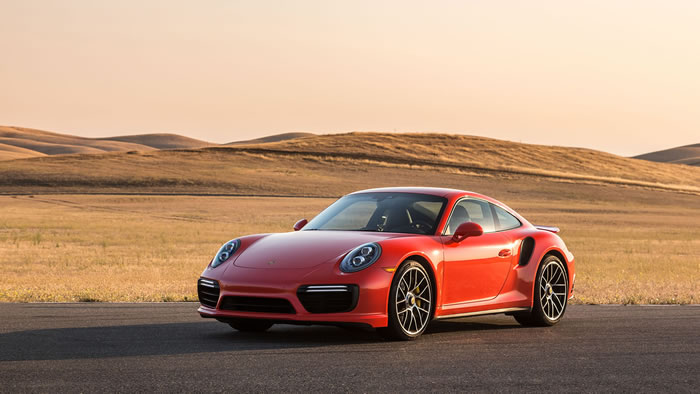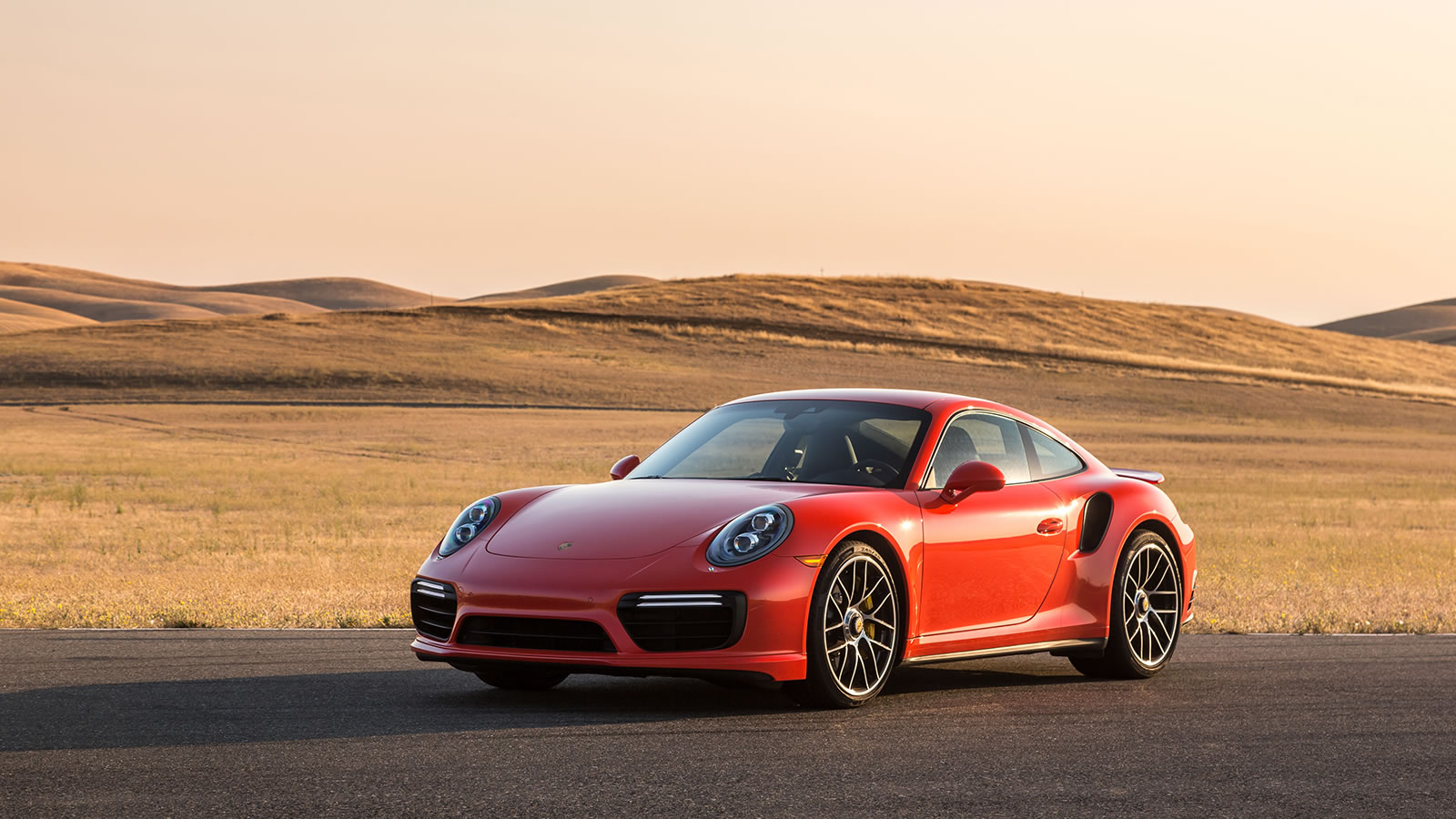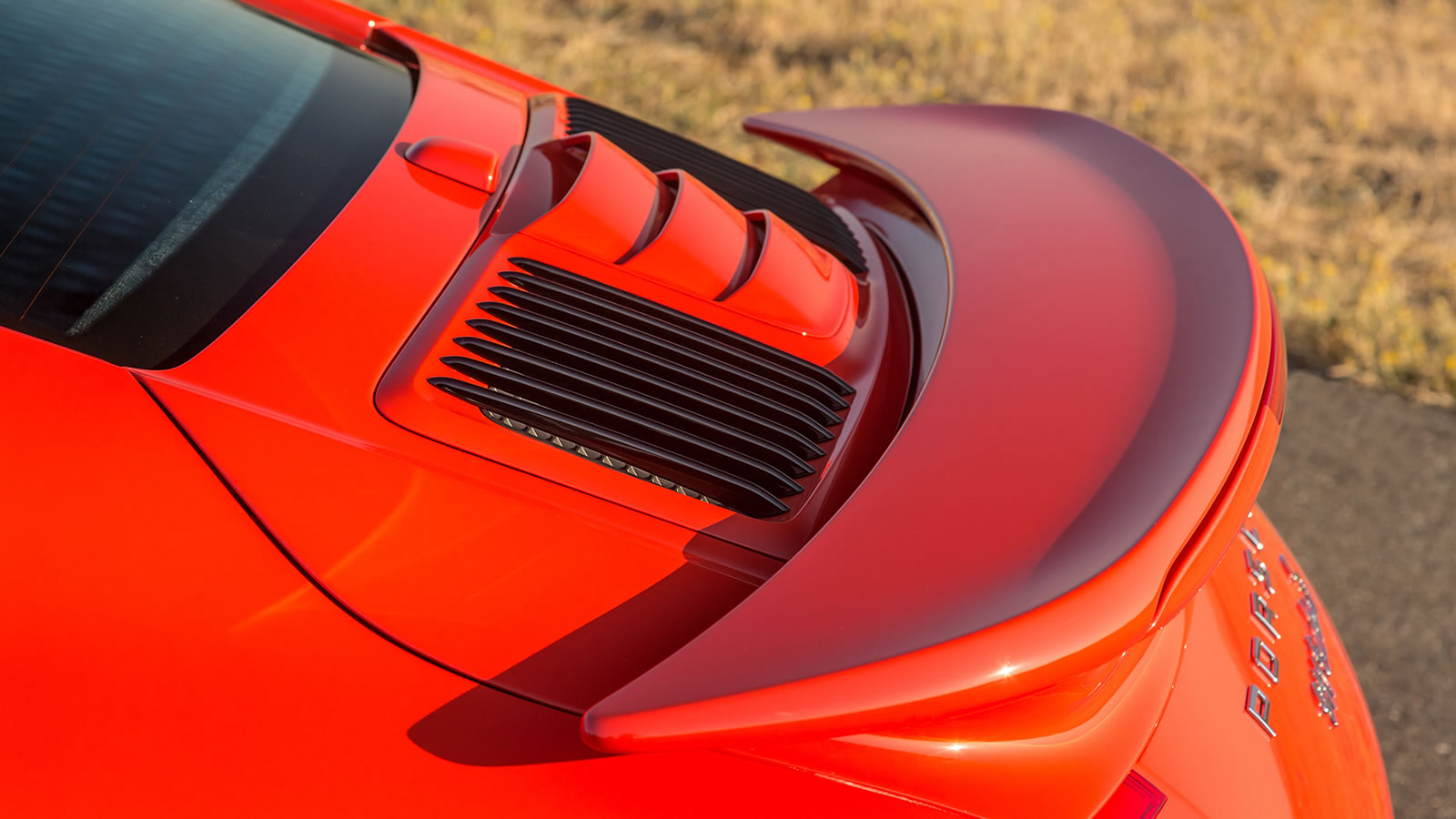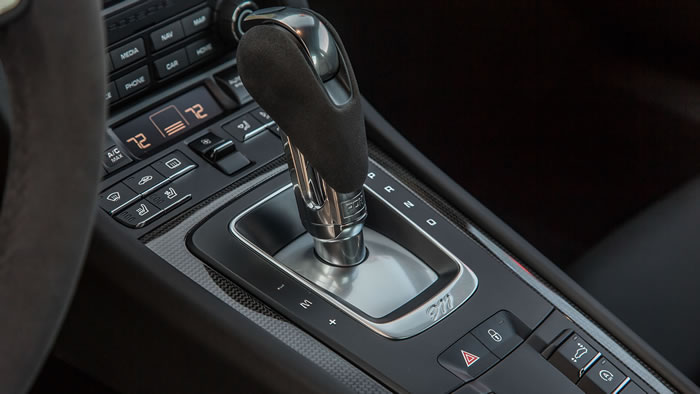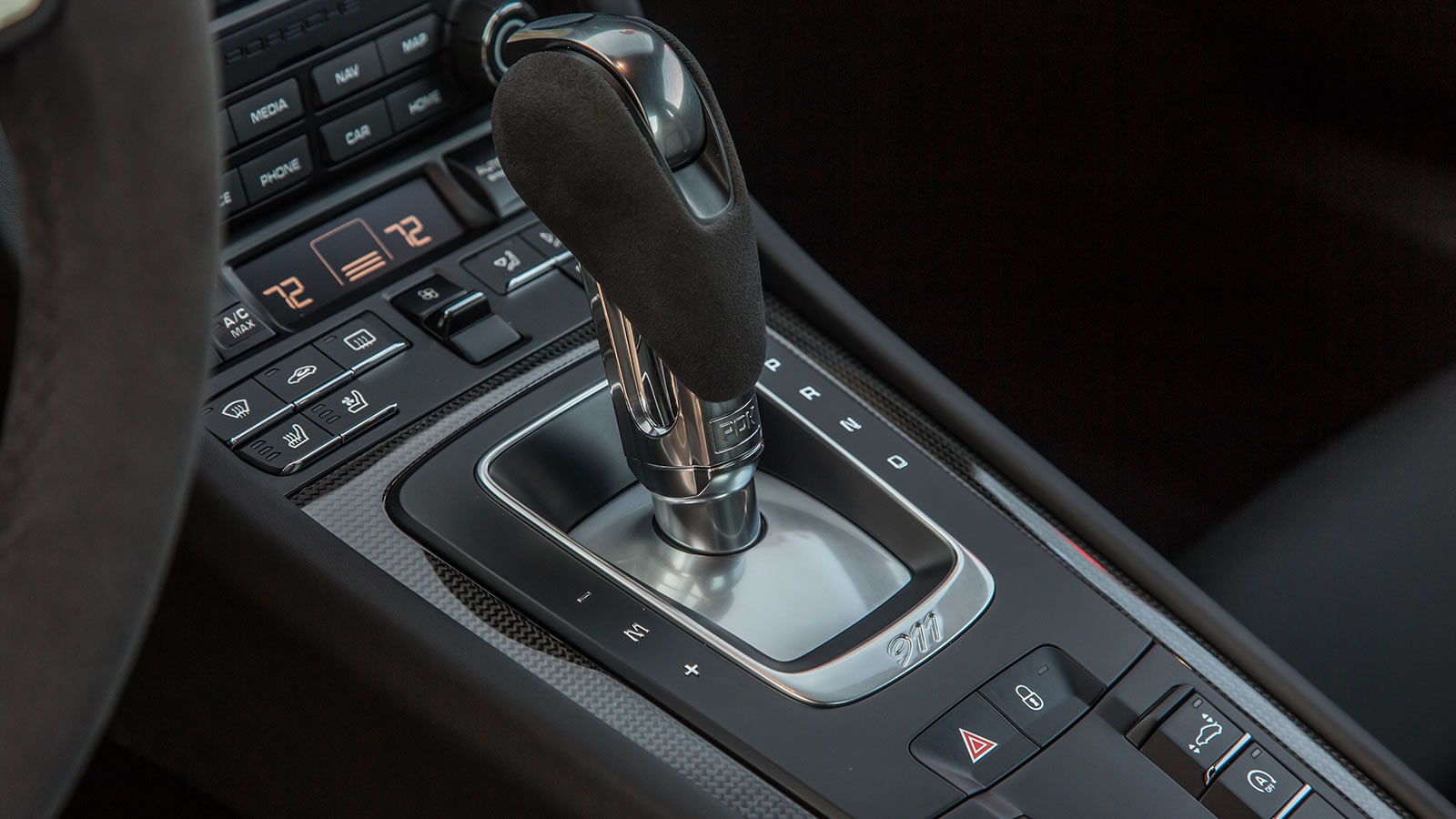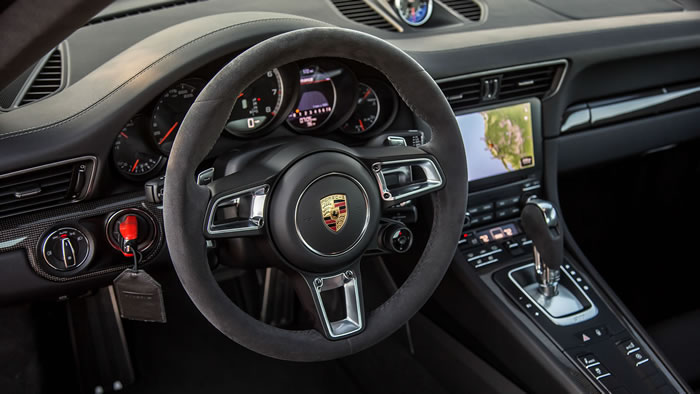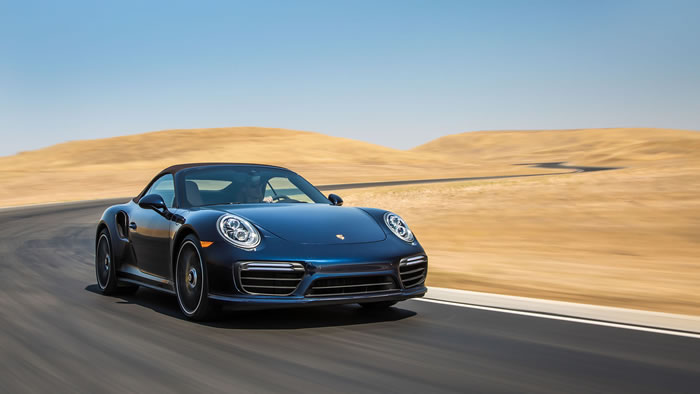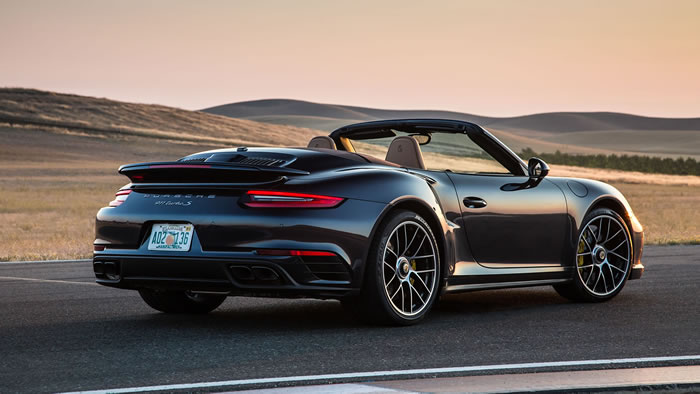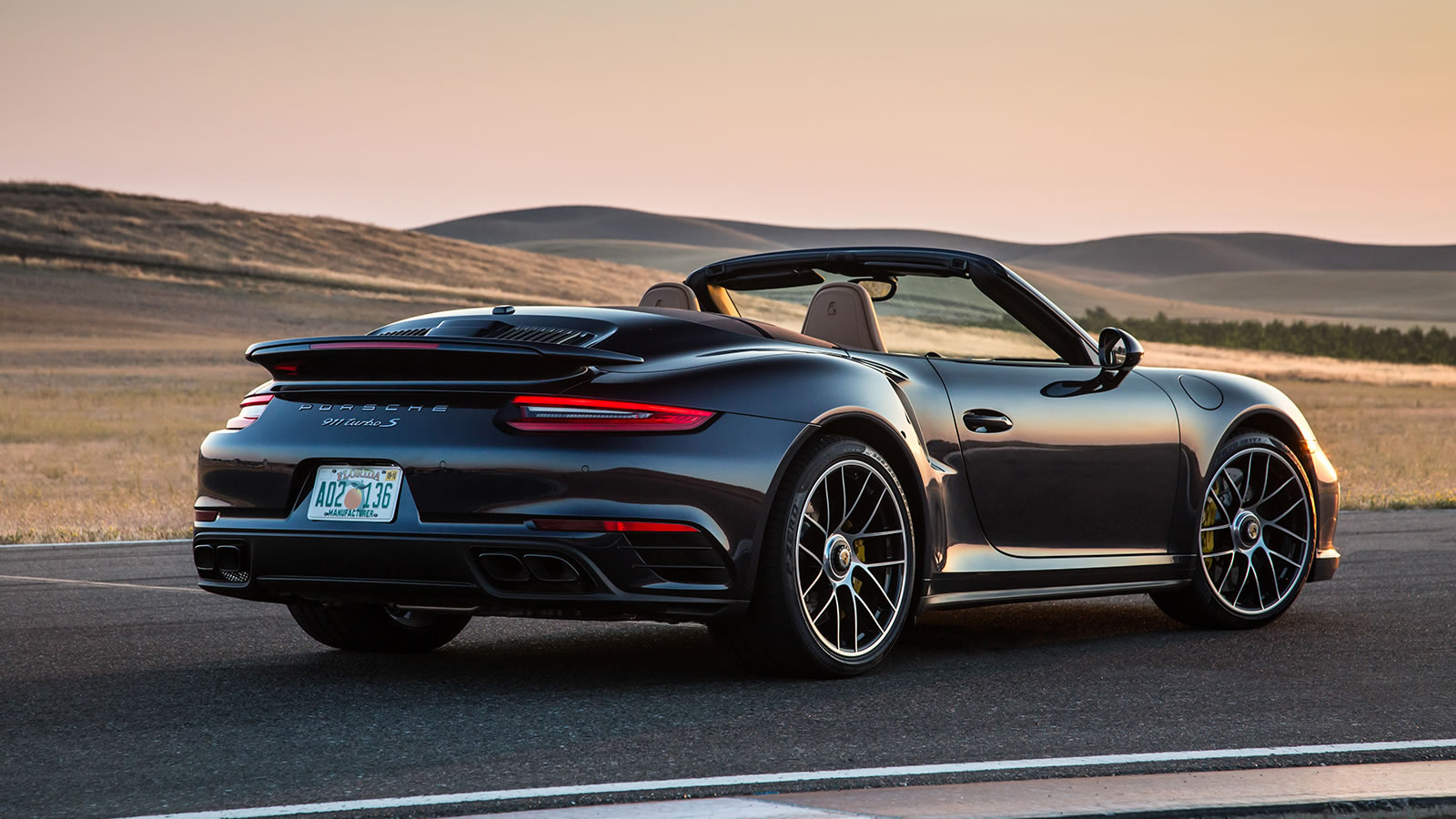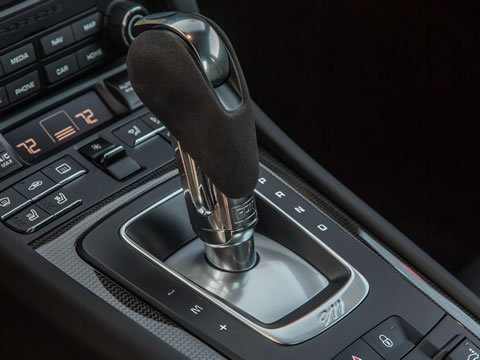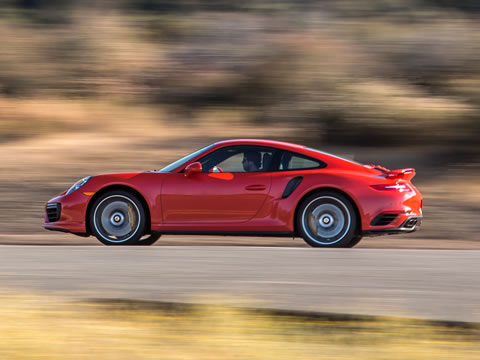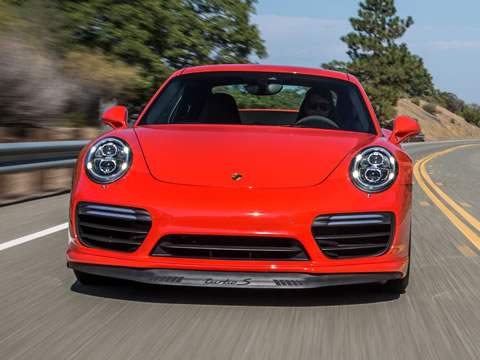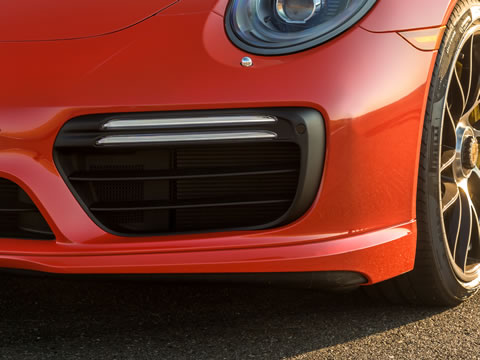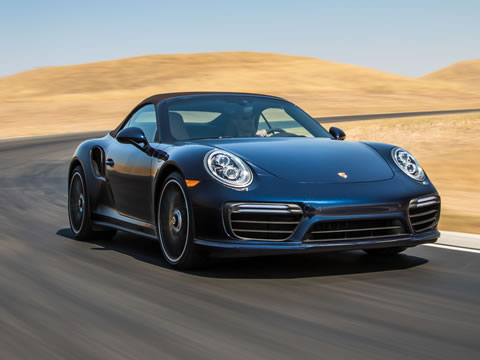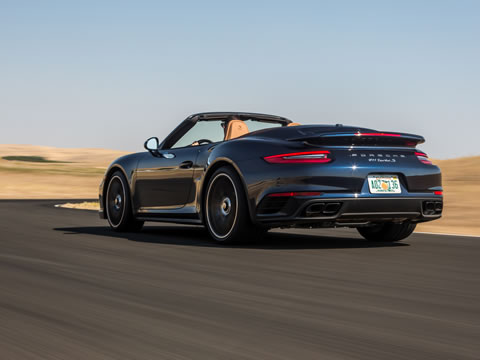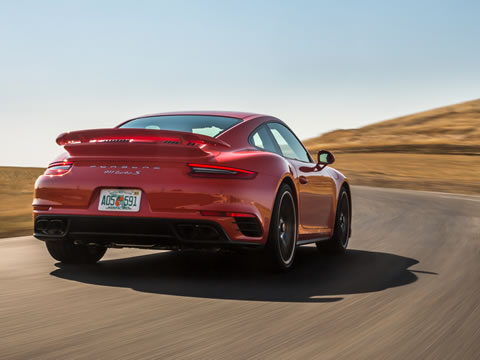|
911 Turbo |
911 Turbo Cabriolet |
911 Turbo S |
911 Turbo S Cabriolet |
| Engine |
| Engine layout |
Rear Engine |
Rear Engine |
Rear Engine |
Rear Engine |
| Engine type |
Boxer, twin-turbo |
Boxer, twin-turbo |
Boxer, twin-turbo |
Boxer, twin-turbo |
| Cylinders |
6 |
6 |
6 |
6 |
| Valves per cylinder |
4 |
4 |
4 |
4 |
| Construction |
Aluminum crankcase and heads |
Aluminum crankcase and heads |
Aluminum crankcase and heads |
Aluminum crankcase and heads |
| Fuel injection |
Direct Fuel Injection (DFI) |
Direct Fuel Injection (DFI) |
Direct Fuel Injection (DFI) |
Direct Fuel Injection (DFI) |
| Fuel |
Premium |
Premium |
Premium |
Premium |
| Displacement (Liters) |
3.8 l |
3.8 l |
3.8 l |
3.8 l |
| Bore/Stroke (mm/mm) |
102 mm / 77.5 mm |
102 mm / 77.5 mm |
102 mm / 77.5 mm |
102 mm / 77.5 mm |
| Maximum power output @ engine speed |
540 hp @ 6400 |
540 hp @ 6400 |
580 hp @ 6750 |
580 hp @ 6750 |
| Maximum torque with Overboost @ engine speed |
523 lb.-ft. @ 2250-4000 |
523 lb.-ft. @ 2250-4000 |
553 lb.-ft. @ 2250-4000 |
553 lb.-ft. @ 2250-4000 |
| Maximum torque @ engine speed |
486 lb.-ft. @ 1950-5000 |
486 lb.-ft. @ 1950-5000 |
516 lb.-ft. @ 2100-4250 |
516 lb.-ft. @ 2100-4250 |
| Maximum engine speed |
7000 |
7000 |
7200.0 |
7200.0 |
| Compression ratio |
9.8 : 1 |
9.8 : 1 |
9.8 : 1 |
9.8 : 1 |
| Output per liter |
142.1 hp |
142.1 hp |
152.6 hp |
152.6 hp |
| Lubrication |
Integrated dry-sump |
Integrated dry-sump |
Integrated dry-sump |
Integrated dry-sump |
| Electrical System |
12 V, 2100 W alternator; battery
capacity 95 Ah |
12 V, 2100 W alternator; battery
capacity 95 Ah |
12 V, 2100 W alternator; battery capacity
95 Ah |
12 V, 2100 W alternator; battery capacity 95
Ah |
| Power to weight ratio (lb/hp) |
6.5 |
6.8 |
6.1 |
6.3 |
| Drivetrain |
Active all wheel drive |
Active all wheel drive |
Active all wheel drive |
Active all wheel drive |
| Chassis & Suspension |
| Body |
Monocoque lightweight body in a combination of steel, aluminum and magnesium |
Monocoque lightweight body in a combination of steel, aluminum and magnesium |
Monocoque lightweight body in a combination of steel, aluminum and magnesium |
Monocoque lightweight body in a combination of steel, aluminum and magnesium |
| Front Axle |
MacPherson strut with anti-roll bar |
MacPherson strut with anti-roll bar |
MacPherson strut with anti-roll bar |
MacPherson strut with anti-roll bar |
| Rear Axle |
Aluminum multi-link with anti-roll bar |
Aluminum multi-link with anti-roll bar |
Aluminum multi-link with anti-roll bar |
Aluminum multi-link with anti-roll bar |
| Steering System |
Variable ratio electromec. power steering |
Variable ratio electromec. power steering |
Variable ratio electromec. power steering |
Variable ratio electromec. power steering |
| Steering Ratio |
15.0 : 1 (on-center) to 12.5 : 1 |
15.0 : 1 (on-center) to 12.5 : 1 |
15:0 : 1 (on-center) to 12.5 : 1 |
15.0 : 1 (on-center) to 12.5 : 1 |
| Turning Circle |
34.8 ft |
34.8 ft |
34.8 ft |
34.8 ft |
| Brakes & Wheels |
| Caliper type |
Aluminum monobloc fixed-caliper brake |
Aluminum monobloc fixed-caliper brake |
Aluminum monobloc fixed-caliper brake |
Aluminum monobloc fixed-caliper brake |
| Rotor material |
Steel |
Steel |
Ceramic Composite |
Ceramic Composite |
| Caliper color |
Red |
Red |
Yellow |
Yellow |
| Number of pistons (front/rear) |
6 / 4 |
6 / 4 |
6 / 4 |
6 / 4 |
| Rotor diameter (front/rear) mm |
380 mm / 380 mm |
380 mm / 380 mm |
410 mm / 390 mm |
410 mm / 390 mm |
| Rotor thickness (front/rear) mm |
34 mm / 30 mm |
34 mm / 30 mm |
36 mm / 32 mm |
36 mm / 32 mm |
| Name and option # |
20" Turbo |
20" Turbo |
20" Turbo S |
20" Turbo S |
| Standard wheels (front/rear) |
9J x 20" ET51 / 11,5J x 20" ET56 |
9J x 20" ET51 / 11,5J x 20" ET56 |
9J x 20" ET51 / 11,5J x 20" ET56 |
9J x 20" ET51 / 11,5J x 20" ET52 |
| Tires (front/rear) |
245/35 ZR 20 / 305/30 ZR 20 |
245/35 ZR 20 / 305/30 ZR 20 |
245/35 ZR 20 / 305/30 ZR 20 |
245/35 ZR 20 / 305/30 ZR 20 |
| Transmission |
| Number of gears |
7 |
7 |
7 |
7 |
| Transmission type |
7-speed PDK |
7-speed PDK |
7-speed PDK |
7-speed PDK |
| Ratios |
|
|
|
|
| 1st |
3.91 |
3.91 |
3.91 |
3.91 |
| 2nd |
2.29 |
2.29 |
2.29 |
2.29 |
| 3rd |
1.58 |
1.58 |
1.58 |
1.58 |
| 4th |
1.18 |
1.18 |
1.18 |
1.18 |
| 5th |
0.94 |
0.94 |
0.94 |
0.94 |
| 6th |
0.79 |
0.79 |
0.79 |
0.79 |
| 7th |
0.62 |
0.62 |
0.62 |
0.62 |
| Reverse |
3.55 |
3.55 |
3.55 |
3.55 |
| Front Axle Ratio |
3.4 |
3.4 |
3.4 |
3.44 |
| Rear Axle Ratio |
3.3 |
3.3 |
3.3 |
3.33 |
| Final Drive Ratio |
TBD |
TBD |
TBD |
TBD |
| Clutch/Converter diameter (inches) |
8.7 / 6.4 inches |
8.7 / 6.4 inches |
8.7 / 6.4 inches |
8.7 / 6.4 inches |
| Dimensions, Aerodynamics, & Weight |
| Length (inches/mm) |
177.4 in. / 4507 mm |
177.4 in. / 4507 mm |
177.4 in. / 4507 mm |
177.4 in. / 4507 mm |
| Wheelbase (inches/mm) |
96.5 in. / 2450 mm |
96.5 in. / 2450 mm |
96.5 in. / 2450 mm |
96.5 in. / 2450 mm |
| Width w/ mirrors (inches/mm) |
77.9 in. / 1978 mm |
77.9 in. / 1978 mm |
77.9 in. / 1978 mm |
77.9 in. / 1978 mm |
| Width w/o mirrors (inches/mm) |
74.0 in. / 1880 mm |
74.0 in. / 1880 mm |
74.0 in. / 1880 mm |
74.0 in. / 1880 mm |
| Height |
51.0 in. / 1297 mm |
50.9 in. / 1294 mm |
51.0 in. / 1297 mm |
50.9 in. / 1294 mm |
| Track width front (inches/mm) |
60.7 in. / 1541 mm |
60.7 in. / 1541 mm |
60.7 in. / 1541 mm |
60.7 in. / 1541 mm |
| Track width rear (inches/mm) |
62.6 in. / 1590 mm |
62.6 in. / 1590 mm |
62.6 in. / 1590 mm |
62.6 in. / 1590 mm |
| Drag coefficient (Cd) |
0.31 |
0.32 |
0.31 |
0.32 |
| Legroom (inches) |
TBD |
TBD |
TBD |
TBD |
| Headroom (inches) |
TBD |
TBD |
TBD |
TBD |
| Cargo area volume (cu.-ft.) front trunk |
115 l / 4.06 cu.-ft. |
115 l / 4.06 cu.-ft. |
115 l / 4.06 cu.-ft. |
115 l / 4.06 cu.-ft. |
| Cargo area volume (cu.-ft.) rear seats |
260 l / 9.18 cu.-ft. |
160 l / 5.65 cu.-ft. |
260 l / 9.18 cu.-ft. |
160 l / 5.65 cu.-ft. |
| Fuel tank capacity - refill volume (gal) |
17.9 gal. |
17.9 gal. |
17.9 gal. |
17.9 gal. |
| Curb weight (lbs) |
3516 lbs. |
3671 lbs. |
3527 lbs. |
3682 lbs. |
| Gross Vehicle Weight (lbs) |
4431 lbs. |
4553 lbs. |
4387 lbs. |
4509 lbs. |
| Payload range (lbs) - depend on options |
915 lbs. |
882 lbs. |
860 lbs. |
827 lbs. |
| Performance |
| Top track speed (mph) |
198 mph |
198 mph |
205 mph |
205 mph |
| Top track speed- electric only (mph) |
|
|
|
|
| Acceleration 0-60 (sec) |
2.9 sec. |
3.0 sec. |
2.8 sec. |
2.9 sec. |
| Quarter mile time |
11.0 sec. |
11.2 sec. |
10.8 sec. |
11.0 sec. |
| Fuel Economy/Rating |
|
|
|
|
| Rating |
- |
- |
- |
- |
| City |
19 mpg |
19 mpg |
19 mpg |
19 mpg |
| Highway |
24 mpg |
24 mpg |
24 mpg |
24 mpg |
| Combined |
21 mpg |
21 mpg |
21 mpg |
21 mpg |



